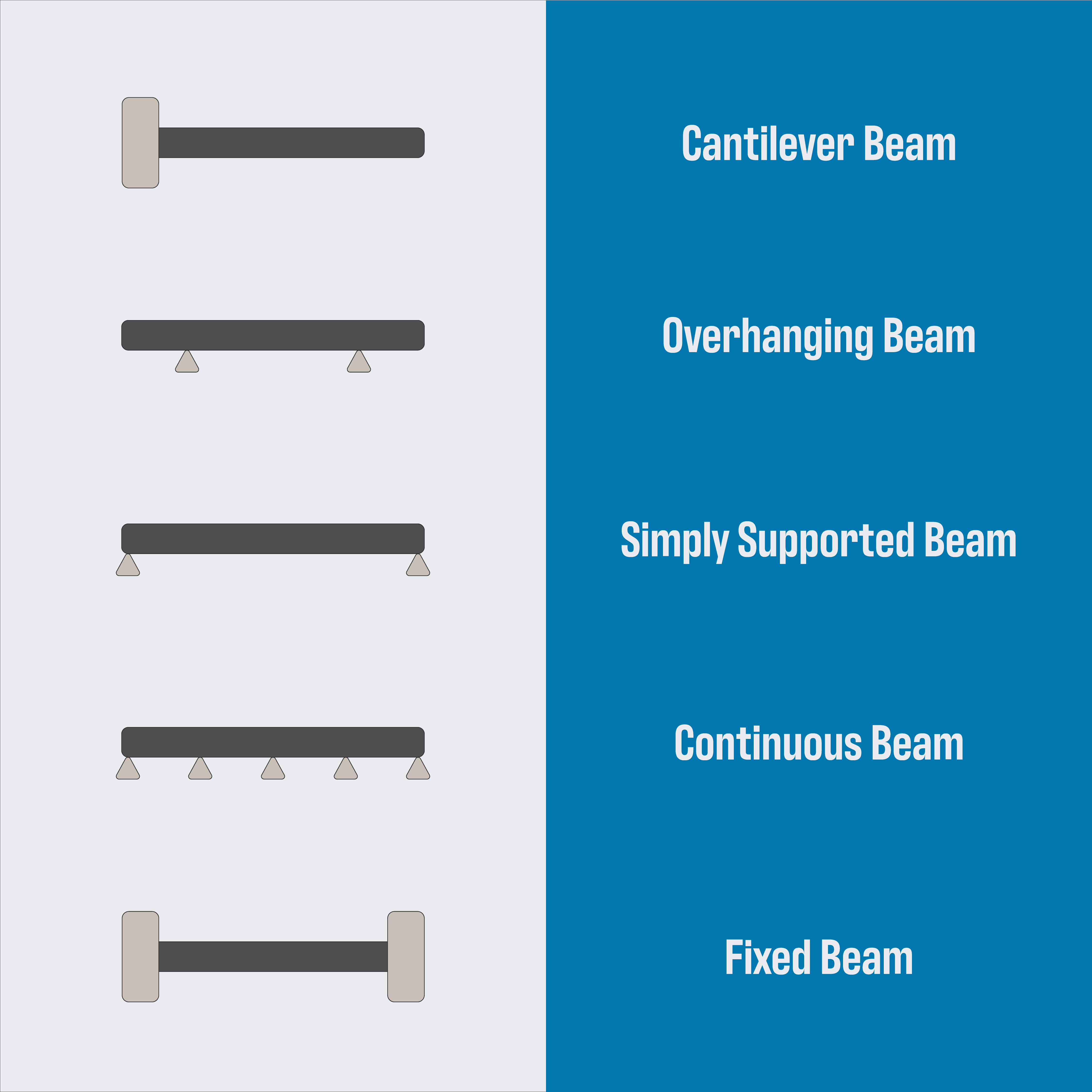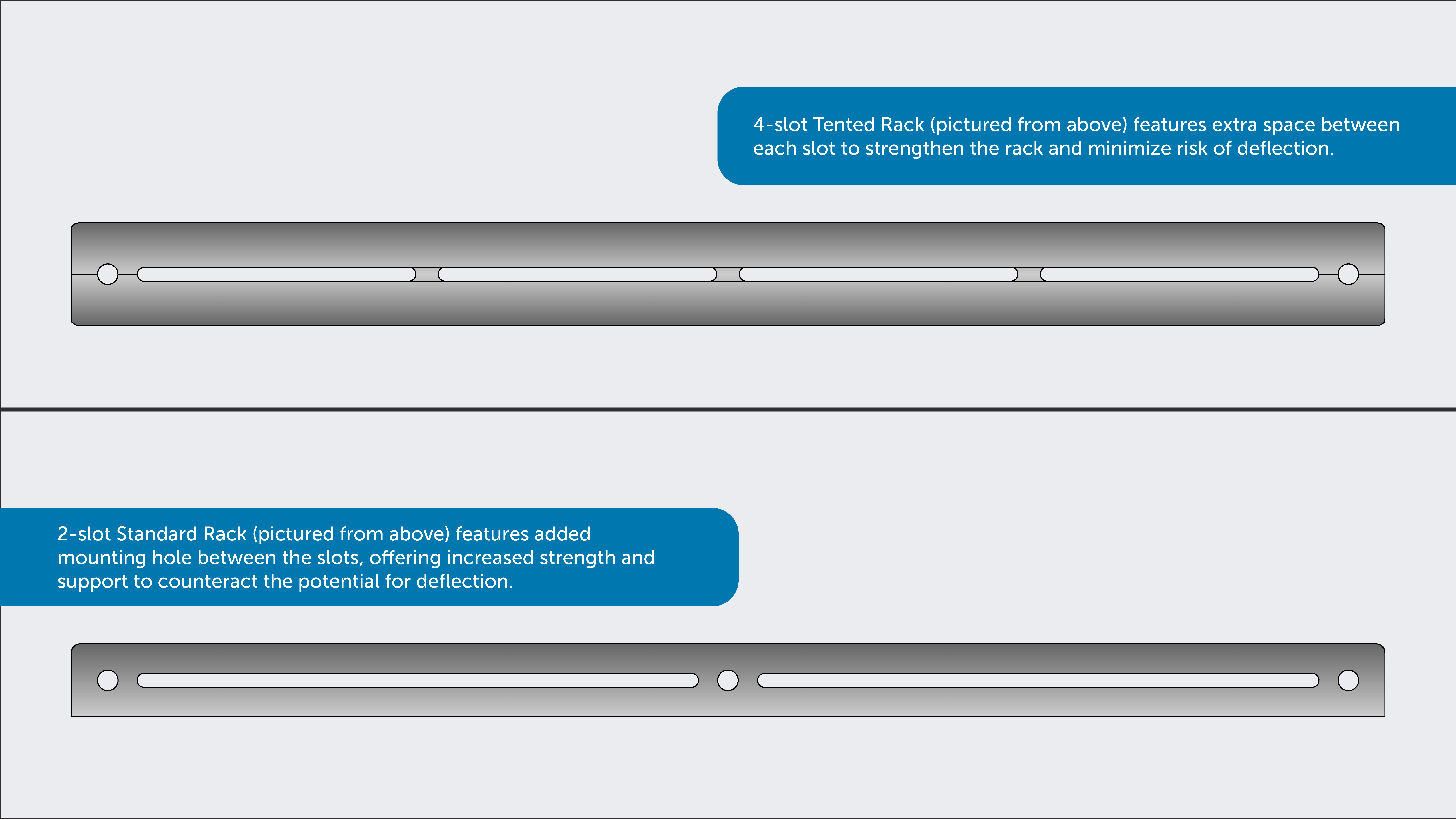Strut systems are essential for supporting infrastructure for all types of industries, including food manufacturing. However, as with any type of infrastructure, strut systems have certain limitations to how much weight they can hold, a concept known as the “load rating”. Load ratings are common for any type of machine or structure designed to hold weight. The load rating of the strut systems you use will vary based on a variety of factors, including the manner of support, length of the struts, span, materials used, environmental factors and the profile of the strut system.
Whether you’re still in the market for a new strut system or you’ve already installed one, we recommend taking a moment to learn more about strut system load ratings. Following this discussion could easily help you avoid wasting money on a system that can’t adequately handle your load requirements, prevent you from having to replace a broken system that was unintentionally overloaded, or even worse, dealing with the resultant risks to personnel and/or equipment in the event of failure.
What are Load Ratings?
Load ratings refer to the maximum allowable weight, force, or pressure that a structure, equipment, or component can withstand under specific operating conditions without causing failure, deformation, or reduced efficiency. It is essential to determine load ratings accurately to prevent accidents, equipment breakdowns, and costly repairs.
Understanding load ratings can be crucial for several reasons, the first being safety. Industrial infrastructure, such as strut, hangers, and the building supports they are attached to, handle substantial loads. Accurate load ratings ensure the safety of workers, the public, and the environment by preventing catastrophic failures. Overloading these types of infrastructure components can lead to premature wear and tear of the products they support, thus reducing the lifespan of assets and increasing maintenance costs. Load ratings help protect these valuable assets.
Another important factor is maintaining compliance. Many industries must adhere to regulations and codes that specify load ratings. Meeting these requirements ensures legal compliance and avoids potential liabilities. Lastly, operating within the designated load ratings ensures optimal performance and efficiency of equipment and structures.
How are Strut Load Ratings Calculated?
Beam load ratings for strut systems involve highly complex calculations across four classification areas:
- Manner of support
- Length of beam/length of span between supports
- Material used (e.g., steel, aluminum, PVC, etc.)
- Profile (cross section of the beam)
While it’s not necessary to bog you down with the math, understanding what these classifications are and why they’re part of the load rating may help you develop a deeper understanding and appreciation for the end result.
Manner of Support
The manner of support describes the way the weight is distributed on the beam. There are 5 common support styles for strut systems:

Each of these has certain advantages, depending on the situation in which they’re used. However, you’ll find that the best support method for strut systems, and the one favored by Robroy Industries, is the simply supported beam. This design is simple to install, offers excellent load bearing capacity, and importantly, transfers most of the weight to the end supports, reducing load in the middle of the beam.
Length of the Beam/Length of Span Between Supports
Theoretically, you can make a strut beam as long as you want. However, the length of the beam and/or length of span between supports that you use will impact what’s known as the deflection of that beam. Deflection refers to the deformation or bending that occurs in a structure or equipment when subjected to a load. While load ratings focus on the maximum weight or force a structure can handle, deflection assesses how much it will bend or flex under the applied load. The importance of deflection in load ratings cannot be overstated, as it directly affects the performance, safety, and functionality of the infrastructure.
Excessive deflection can compromise the structural integrity of your structure. If a structure bends beyond acceptable limits, it may lead to cracks, permanent deformation, or even collapse, posing significant safety risks to occupants and surrounding areas. Additionally, excessive deflection can cause noticeable vibrations or amplified vibrations in infrastructure utilities. Additionally, it can affect the aesthetics of the structure, making it appear poorly constructed or unstable.
Deflection can also cause an uneven distribution of loads within a structure. This redistribution may lead to localized stress concentrations, accelerating wear and fatigue on specific components, potentially causing unexpected failures.
Many regulatory standards and building codes include limits on deflection to ensure the safety and reliability of structures. Adhering to these guidelines is essential for obtaining permits and certifications for industrial projects. Monitoring deflection regularly can help detect early signs of structural issues or equipment malfunctions. Identifying and addressing potential problems promptly can prevent catastrophic failures, saving lives and mitigating financial losses.
Remember, the greater the length of the beam, and the greater the span between supports, the more likely you are to experience deflection, especially at higher loads. When using strut systems with longer beams, ensure the beams have uniform loading. Or consider utilizing rack that offers the ability to accommodate additional support across the length of the rack or incorporates extra material to minimize the risk of deflection (like the images below). For example: a 60” standard Rocket Rack, installed with three support rods (one on each end and a third in the middle) has a far greater load capacity than a 60” standard Rocket Rack installed with just the two support rods on the ends.

Beam Material
Beam material is one of the easier concepts to understand. The material that’s used will impact the modulus of elasticity, or how resistant a material is to bending under the pressure of weight. Most strut systems are composed of either steel, stainless steel, or aluminum. The modulus of elasticity is often measured in kips per square inch (ksi), a unit of measurement of pressure or stress on a material. The higher the ksi number, the more rigid or stiff the material and the less likely it is to bend under higher pressure (or weight).
As long as the material remains below the yield strain, it maintains its shape. However, once the material has exceeded its capacity, it bends and becomes deformed permanently.
Any deformation negatively impacts the load capacity of the material, making that strut compromised until it is replaced.
Beam Profile
If you look at any metal beam used in construction, you’ll notice they often come in different shapes and sizes. For example, the I-beam or H-beam shape is common in construction and gets its name from its similarity to both of those letters. This design is not accidental.
The ability of a beam’s shape to reduce deflection is known as its “moment of inertia”. The I/H-beam shape is a go-to in construction because of its high moment of inertia, which allows it to have a higher load capacity compared to a flat or rounded beam, both of which boast a considerably lower moment of inertia.
Consequently, the unique selling point of the Rocket Rack patented strut design is in its profile. Our structural strut systems have a unique inverted Y-beam profile that creates a moment of inertia that is 2.7 times greater than the strut profile design of our closest competitor. Ultimately, that means our strut design has a smaller deflection for the same load, making it capable of handling more weight.
How Do I Use Load Ratings for Rocket Rack and Other Strut Systems?
When it comes to the installation of Rocket Rack and other strut systems, understanding the concepts previously discussed is crucial for ensuring structural integrity and safety. Consider the following key considerations and calculations you need to make, emphasizing the importance of accurate data for various load scenarios:
- Comprehensive Load Data: To make informed calculations, it's essential to have access to all relevant data. Rocket Rack provides both point and distributed load information, taking into account factors such as deflection and live loads for specific applications. Unlike systems that only offer distributed load ratings, our approach considers diverse scenarios, including point loads and different conduit sizes running across the same beam.
- Factor of safety: Every calculation presented by an engineer should incorporate an adequate safety factor. We prioritize safety in our load ratings, ensuring that the specified capacities have a built-in margin for unforeseen circumstances.
- Load Types (Point and Distributed): Understanding the distinctions between concentrated point loads and uniformly distributed loads is crucial. Our load ratings address these variations, providing a nuanced approach that goes beyond standard beam ratings. This ensures a more accurate representation of the load-bearing capacity in diverse mounting scenarios.
In conclusion, understanding and optimizing load ratings for Rocket Rack and strut systems involves a holistic approach that considers various load types and factors of safety. By prioritizing comprehensive data and hardware reliability, our system ensures a robust and secure installation that meets the demands of diverse applications. For a safe and effective strut system, make informed decisions based on accurate load calculations and a thorough understanding of your specific mounting requirements.
To help give a better understanding and context around the information above, please reference the definitions document.
